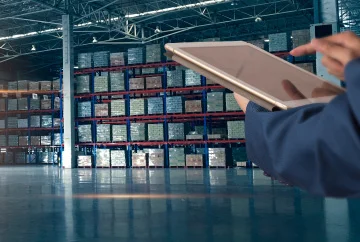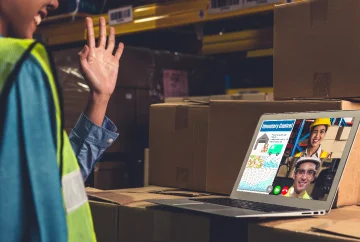Purchase price variance and its relevance to manufacturers
For manufacturers that have a large supplier base, any variance in the cost of a raw material has a severe impact on its costs. Every manufacturer estimates the price of the raw material goods it needs to drive manufacturing as part of the quarterly or annual planning exercise. During the time of actual delivery of these goods, the cost undergo deviation from the standard cost estimated during the planning phase. The manufacturer records the variation between the actual cost paid and the estimated costs as Purchase Price Variance (PPV) in its account books. Mathematically speaking:
Purchase Price Variance = actual cost (purchased) - standard cost (as determined initially)
As discussed above, depending upon the purchasing scenarios, price variance may be positive or negative. A positive PPV indicates that the manufacturer paid more than what was estimated (higher purchase cost), and a negative PPV indicates that the manufacturer paid less than what was estimated (lower purchase cost). Positive PPV suggests the business to rethink on its supplier spend management strategy. On the other hand, a negative PPV means that the business is doing well on supplier cost minimizations.
Where do the challenges lie for the manufacturers?
Every manufacturer prefers the below listed, as part of its supplier collaboration ecosystem
- A single dashboard view for all top performing vendors along with their material and best prices
- Deep insights about the factors that affect price variability
- Short cycle time for supplier and material evaluation
- A scientific way to figure out the combination of the part’s purchase price and its supplier
The presence of multiple vendors across different product lines, with varying part specifications, across different geographies makes it difficult for a large manufacturer to have a base-line estimate of the prices. For complex procurement scenarios that exhibit purchase price variance, the need for vendor evaluation becomes even more crucial when it comes to price negotiations. To put things in perspective, a significant portion of the organization’s procurement efforts goes in determining what to purchase and from whom to purchase.
How AI acts the savior?
With above as the background, if you look closely, we’re talking of a situation where millions of product and supplier parameters must be evaluated to arrive at the final decision. E.g., a part can have features like pitch, diameter, material type, finishing, etc. and the supplier can have dimensions like country, brand name, performance data, etc. Not all these parameters are crucial to the success and machine learning/AI backed statistical analysis help the manufacturer figure out the parameters that matter the most.
Through supervised machine learning, a manufacturer can group product parts based on different groups and develop a standard base-line group for price comparisons. Multivariate regression can be used to predict a standard purchase price based on multiple product and external attributes.





